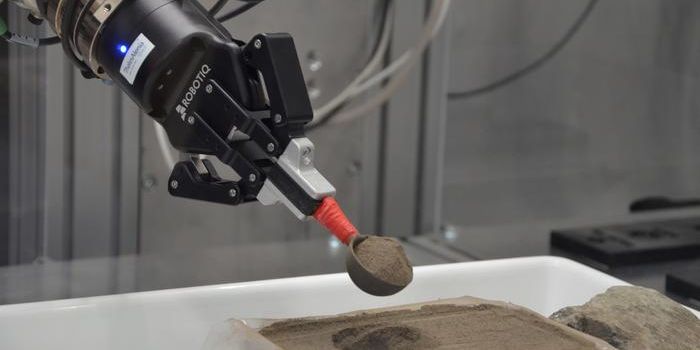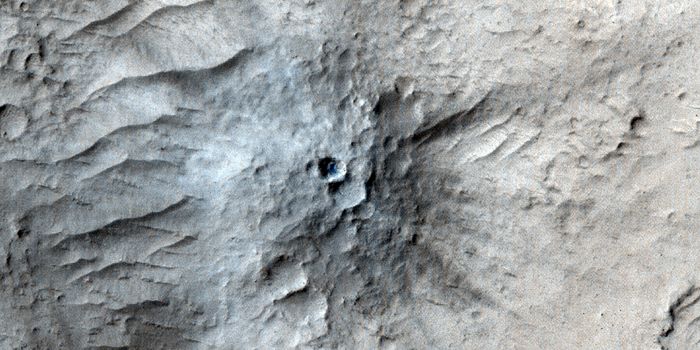The most memorable space events of 2019
This year was one of the most exciting ones for all of the space geeks around the world. Many discoveries and once in a lifetime events happened in astronomy. Read on to learn about the most memorable space events of 2019.
January
In January, NASA’s New Horizons pictures of Ultima Thule fascinated the science world. The image of the small cosmic object encouraged so many discussions in social media and it brought many associations. The Kuiper Belt object began to be known as the ‘snowman’ because of its structure of two different objects joint into one whole. Ultima Thule gave scientists an opportunity to sneak into the Solar System’s most distant areas, beyond the orbit of Pluto. More data, collected by New Horizons' mission, awaits to be received so we can be sure that the image of Ultima Thule was just the beginning.
February
In February, NASA announced one of its future missions whose aim will be to study the most distant places of the Universe, gaining knowledge about the post-Big Bang cosmic evolution, and to hunt for the presence of water and organic molecules in our galaxy. The launch of SPHEREx (Spectro-Photometer for the History of the Universe, Epoch of Reionization and Ices Explorer) is planned for 2023 and its duration is estimated to be two years. SPHEREx will study around 300 million galaxies. The key objective of the mission will remain to focus on extremely distant star clusters.
March
In March, a possible mission to visit Titan – one of the moons of Saturn, was announced. Dragonfly is expected to be launched in 2026 and to reach Titan around 2034. The structure of the space probe is planned to resemble a drone. Titan is one of the places in our Solar System with the highest chances to sustain life. The Saturnine moon is bigger than the closest planet to our Sun-Mercury and it is the second biggest moon in our Solar System. The atmosphere of Titan is mainly composed of nitrogen and there are rains of methane. The temperature on its surface is much lower than Earth’s because of the great distance from the Sun. Dragonfly will be part of the series of missions of NASA, known as New Frontiers. New Horizons, Juno and OSIRIS-REx also form part of New Frontiers.
April
April was probably the most exciting month of the whole year in the science world and that is quite reasonable. In April, we saw the first-ever direct image of a black hole. Why this was so important? Until now, black holes were something that we knew existed but we have never had real proof of this idea. We could tell that black holes were real and possible to form, judging by Einstein’s equations and by the discoveries of a whole movement of scientists who followed his ideas and developed them in a completely new field of space studies. The first-ever picture of a black hole was made by using several radio telescopes around the globe, which worked as one whole. The pictured black hole is a supermassive black hole, located in the center of the M87 galaxy, 55 million light-years away from us. Its mass is also fascinating – 6.5 billion times the mass of the Sun.
May
After the euphoria experienced in April, May seemed quite boring in terms of scientific discoveries. At the end of the month, recent research suggested the existence of an insulated underground ocean on Pluto – once thought to be the ninth planet, then transferred to the rank of a ‘dwarf planet’. As Pluto is located too far from the Sun, its destiny is marked as an icy object, but scientists believe that oceans are hiding under its icy crust. Despite the fact that Pluto’s ocean is probably not made of water but other liquids scientists still aim to study its structure and understand if life can develop without the presence of water.
June
The scientific world was still overwhelmed by the first image of a black hole, as it will be for a long time. However, science does not have a day-off and it does not stop discovering and searching for the answers to hundreds of questions. In June, we had an exciting discovery of a new type of quasars. Quasars are the most luminous objects in the whole Universe, ejecting 10 trillion times more energy than the Sun. Studying the nature of the quasars gives many answers about the behavior of the supermassive black holes, which are located in the centers of the galaxies. The group of scientists who discovered the blue quasars believe that they are strongly associated with the merging of galaxies. Our galaxy – the Milky Way is expected to begin its merging with its closest neighbor – the Andromeda galaxy in 3 to 4 billion years.
July
July was marked by the 50th anniversary of the Apollo 11 mission. Scientists prefer looking into the future instead of remembering the past. However, remembering all those who took the risk for future generations is always worth it. Two of the astronauts of Apollo 11 are still alive so we have the amazing opportunity to hear what was to be the first in such a dangerous challenge. Probably the most emotional part of the Apollo 11 celebrations was one of Buzz Aldrin’s speeches when he expressed his disappointment with the fact that 50 years later the field has not experienced any progress.
August
In August, the scientific editions told us the story of a planet, called HR 5183 b, which amazed scientists with its weird egg-shaped orbit. HR 5183 b has a mass three times bigger than that of Jupiter (the biggest planet in our Solar System). There is no other exoplanet with such eccentricity in the orbit around its host star. HR 5183 b can go as far as the orbit of Neptune away from its star and then come closer at a distance similar to this between our Sun and the asteroid belt, located between Mars and Jupiter. Scientists explain the eccentric orbit of the exoplanet with a possible collision between it and other objects in the past, likely a companion planet of the same size.
September
We will probably remember September with India’s unsuccessful mission to the Moon. We will also remember how the discovery of water molecules on an exoplanet became so viral that it went into the TV news around the globe. K2-18b is an exoplanet, located at a distance of 110 light-years away from Earth. Scientists found traces of water vapor on the planet but they cannot say how much exactly it is – it could be either 0.1% or 50%. With current technologies, we are still not capable of finding out. K2-18b may have some water in its atmosphere, but there are other important characteristics, which are not so attractive. For example, its size is two times bigger than the size of the Earth and its mass is eight times greater, which means that gravity is stronger, so walking could be extremely hard. If there is even a solid surface.
October
In October we learned about an explosion that happened somewhere near the supermassive black hole in the center of the Milky Way 3.5 million years ago. The explosion sent a cone-shaped burst of radiation through both poles of the galaxy and out into deep space. The explosion was so powerful that scientists cannot come up with another proposal for its source. They agree that it should have been provoked by the activity of the supermassive black hole Sagittarius A* which lies in the center of our galaxy. This discovery is so important because it changed our minds about the activity of Sagittarius A* which we thought was quite low.
November
November came with good news for all astronomy geeks around the world. It was confirmed that Voyager 2 has reached interstellar space. This makes Voyager 2 the second manmade object to go beyond the outer boundaries of our Solar System after Voyager 1 did that back in 2012. Scientists confirmed the news after noticing changes in the data of cosmic plasma density, which the space probe sent back to the Earth. Voyager 2 reached interstellar space at a distance of 119.7 AU (approximately 17 billion km) from the Sun.
December is here and we cannot wait to see what discoveries lie ahead.
Sources: Cosmos Magazine, NASA









